China-Japan: Cautious Steps Across the Divide
China-Japan: Cautious Steps Across the Divide
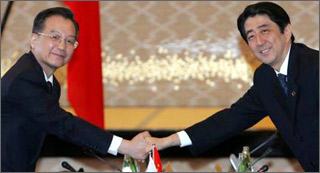
Prime Minister Shinzo Abe at the start of an ice-breaking meeting
EDMONTON: Chinese Premier Wen Jiabao's visit to Japan was dubbed as an "ice-thawing" journey" by both Beijing and Tokyo. Likewise, Japanese Prime Minister Shinzo Abe's China trip last October was called an "ice-breaking visit." Indeed, political relations between the Asian neighbors were icy throughout the 20th century.
But there have been positive developments since last fall, ranging from resumption of summit diplomacy to cooperation in energy conservation and combating climate change. The two countries now talk about forging a "strategic and mutually beneficial relationship" - pushing their ties to a higher level.
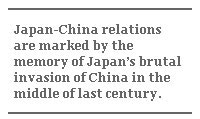
Japan's economic recovery is also banking on the continuous "China boom," which led to Sino-Japanese trade volume ballooning to more than US $200 billion last year, and China, combined with Hong Kong, overtaking the US as Japan's largest trading partner.
However, Japan-China relations are still marked by the memory of Japan's brutal invasion of China in the middle of last century, as well as strategic rivalry over territorial disputes and military modernization in recent years. Many questions remain on whether the two rising powers in East Asia can overcome their differences and move toward true reconciliation.
Under the leadership of former Japanese prime minister, Junichiro Koizumi, from 2001 to 2005, Tokyo's political ties with Beijing deteriorated. The controversy surrounding Koizumi's insistence on annual visits to the Yasukuni Shrine, where war criminals are buried among the war dead, stirred nationalism in both countries. Popular opinions toward the other turned more negative. A large-scale anti-Japanese demonstration, officially tolerated at the initial stage, occurred in Beijing, Shanghai and other major Chinese cities in the spring of 2005. The angry outburst of Chinese youth toward what they perceived as Japan's whitewash of past aggressions sent shockwaves throughout Japan. Chinese President Hu Jintao reiterated China's bottom line early last year: There would be no summit between the two countries as long as Japan's prime minister visited Yasukuni.
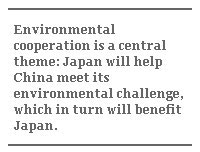
Under pressure to break the deadlock, Abe, on becoming prime minister last September, decided to change Koizumi's confrontational policies by immediately visiting China and South Korea. He made Beijing - rather than Washington, Japan's traditional ally - the destination of his first foreign visit as prime minister.
At first glance, Abe seems an unlikely candidate with whom Beijing would like to reestablish summit-level relations. Handpicked by Koizumi as his successor, Abe is a well-known conservative with hawkish views on foreign policy and history-related issues. But he promised to handle the Yasukuni issue "appropriately." In return, Chinese leaders only pressed the matter indirectly, indicating that they are willing to provide Abe with enough domestic space to maneuver.
For the moment, the two sides seem to have settled for a compromise based on a "don't-ask-and-don't-tell" formula, allowing both to save face. Beijing announced that "the political obstacle in Sino-Japanese relations has been removed," while the Abe camp stated that the prime minister has not made promises one way or the other on the issue of the shrine.
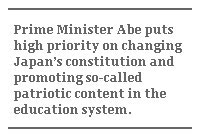
To his credit, Abe proposed that Japan and China should establish a "strategic and mutually beneficial relationship." In explaining his initiative, Abe stressed energy conservation and environmental cooperation as the central theme of such a strategic approach: Japan will help China meet its environmental challenge, which will in turn benefit Japan. Abe's new orientation on Japan-China relations has been well received by Beijing, and the two countries have moved quickly to mend ties. The two leaders met during the Asia-Pacific Economic Cooperation summit in November and a month later in Hanoi. During the second ASEAN-East Asia summit in January, Premier Wen met with Abe as well.
At the working levels, Japanese and Chinese academics and experts have met twice to discuss history issues - a positive sign that both sides talk to each other on sensitive topics. Beijing and Tokyo held further meetings for strategic consultations, conducted new rounds of negotiations on the East China Sea dispute and closely coordinated on North Korea.
Parallel to these positive developments, given high praise by both sides, another set of movements is going on in Abe's new China policy. Domestically, Abe has put a high priority on changing Japan's constitution and promoting so-called patriotic content in Japan's education system. He filled his cabinet and advisory circles with ultranationalists, and moved quickly to upgrade Japan's Self Defense Forces (SDF) from the status of an agency to that of a ministry, making the SDF one step closer to a full-fledged military machine. Internationally, Abe personally lobbied the EU countries not to lift the arms embargo on China during his trip to Europe in January. Japan has intensified strategic and military coordination with the US in the Asia Pacific region. The two militaries are further integrated in their command and control structure, in their consultations on logistical support in the case of a conflict over Taiwan, and in the speedy deployment of the missile-defense system. Abe has also been trying to form a US-Japan-Australia-India "democratic alliance."
What is the overall objective of these policy measures? It is straightforward, according to Abe's senior advisor Hisahiko Okazaki, former Japanese ambassador to Thailand and Saudi Arabia and an ultranationalist: A review of the current situation in East Asia "would make it clear that the balance of power will be between the U.S.-Japan alliance and China...China has to deal with this reality. We have to be prepared for war."
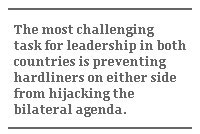
In response, Beijing has not so quietly flexed its own muscles lately to demonstrate that its peaceful-rise rhetoric should not be confused with the fact that China will not settle for third-rate power when it comes to issues of national security and prestige. Last December, the People's Liberation Army revealed its newly developed J-10 advanced fighters in an unusual blaze of publicity. In January, China successfully destroyed one of its own aged communications satellites, 15,000 km above the earth, with a ground-launched missile, demonstrating its precision-targeting capabilities. And there is much speculation that China is about to build its own aircraft-carrier battle groups. Clearly, for Abe and Okazaki, balance of power is the supremacy of the US-Japan alliance in the Asia-Pacific region, while Beijing interprets it as the eventual equal distribution of power between China and its potential rivals.
But for now, Beijing and Tokyo have entered a new round of the "normalization process" after five years of interruptions. Wen's current trip to Japan, seven years after his predecessor Zhu Ronji made the journey in 2000, is promoted by both sides as a further step of a warming-up bilateral relationship.
As the old Chinese saying goes, it takes more than one cold day for the river to freeze three feet deep. The obverse may be true with Wen's ice-melting efforts as many painful memories will arise in the course of the anniversaries this year. This year marks the 35th anniversary of the normalization of Sino-Japanese relations, but it also marks the 70th anniversary of both Japan's full invasion of China and the Nanjing Massacre.
With both Tokyo and Beijing pursuing a two-prong approach with each other, the most challenging task for the leadership in both countries is how to prevent the hardline, worst-case-senario and confrontational movement on either side from hijacking the bilateral agenda, putting the two giant neighbors on a road of collision rather than cooperation.
Wenran Jiang is the director of the China Institute at the University of Alberta.